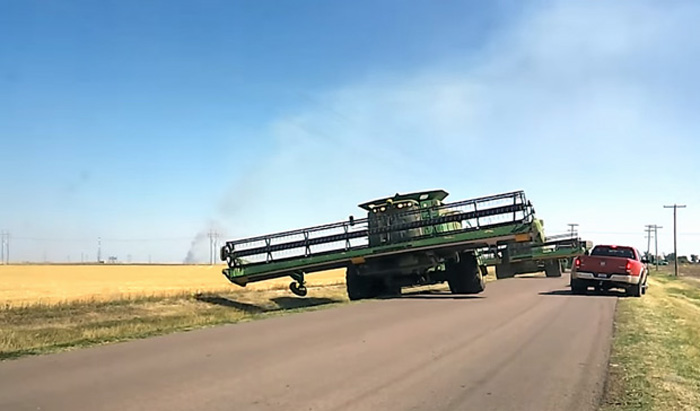Large tractors – combines – cultivators. Chances are that motorists traveling in rural Manitoba this time of the year will encounter agricultural machinery as producers are hard at work taking crops off their fields.
“During harvest season, it’s particularly important that producers and motorists do their part to avoid collisions,” said Ward Keith, vice-president, Business Development & Communications, Manitoba Public Insurance.
“Farm equipment is large, may take up more than one lane, and is slow moving so motorists need to use extra caution when approaching and overtaking. Similarly, producers need to do their part to ensure equipment is properly signed with lights and reflectors in use. Extra caution is also required when entering roadways and making turns with this equipment.”
On average, there are about 20 collisions yearly in Manitoba involving agricultural equipment and passenger vehicles, according to Manitoba Public Insurance data.
Farm equipment is required to have a slow-moving vehicle emblem clearly visible to traffic approaching from behind, with red reflectors on the back as close as possible to the left and right sides. At night, farm equipment must have headlights, red tail lamps and flashing amber warning lamps.
“Motorists also have to do their part when approaching farm equipment to ensure we all stay safe,” said Bill Campbell, President of Keystone Agricultural Producers. “That includes slowing down, watching for equipment turn signals, and not trying to overtake a turning piece of equipment.”
While farm machinery needs to be clearly marked, all road users have a responsibility to safely share the road. Farm equipment has a maximum speed of 40 km/h so it’s easy for motorists to misjudge their speed of approach.
“Motorists can do their part by keeping a safe distance from agricultural machinery,” added Keith. “Motorists should be patient when they come upon farm equipment and only pass when safe to do so.”




